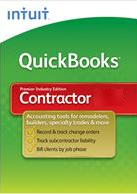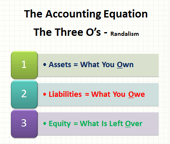Getting approved for a business loan or line of credit is more complicated than qualifying for a personal loan. Small construction business owners must be adequately prepared to meet with a lender to present their business in the best possible light and ready for the money they need.
Think of all the times:
- You loaned money to a friend or relative
- Provided labor and materials for somebody's home or business without a deposit check
- Did change order work that you never got paid for doing and never will
- Gave a subcontractor/employee an advance on their paycheck, and you never got paid back
Multiply that by 100,000, and you will understand why banks seem so tight-fisted about loaning money.

Banks stay in business by loaning money and earning interest. They work hard to find people, companies, and contractors with reasonable credit risks they can lend money to and get paid back promptly, with all of the interest due to them. Do your best to avoid raising any of these red flags.
#1 Your Profit & Loss and Balance Sheet Reports do not conform to financial industry standards
#2 The financials tell the banker your bookkeeper doesn't understand Construction Accounting
#3 The preparer's signature on the annual tax returns is not from a qualified tax specialist
#4 You have no access to a Construction Accountant, not even for quarterly check-ups
#5 You don't have a formal documented Business Plan with a budget and projections
If you have already raised some or all of these red flags, no worries; we can help you fix most of them.
Bankers love chatting with accountants because we speak the same language as homebuilders, who love talking with sub-contractors and building material suppliers. After all, you all speak the same vocabulary.
The Risk Management Association (RMA)
1914- the Robert Morris Club (RMA) was formed to help businesses and bankers exchange credit information. It was named after Robert Morris, a signer of the Declaration of Independence, and was believed to be the primary financier of the Revolutionary War.
The RMA developed several tools; among them was a system of Ratios that we use today to study the financial statements of all companies in all industries.
The banking and lending industry has enormous databases and artificial intelligence software from places like The Risk Management Association, allowing them to separate reasonable contractor risks from bad ones. It generates recommendations based on algorithms much more complex than any gambling casino and with a much higher payoff.
One of the keys to getting a banker, lender, or bonding company to consider your construction company for financing is how your financial statements are presented. In particular, your construction company's Profit & Loss and Balance Sheet.
A banker, lender, or bonding agent logs into their RMA account, fills out electronic forms, answers questions about your construction company, and inputs specific numbers in specific blanks taken directly from your construction company's Profit and Loss and Balance Sheet. Any construction accountant knows precisely how to set up QuickBooks correctly for this process.
If a contractor gives their banker, lender, or bonding agent a set of financial reports that do not conform to the RMA requirements, they may or may not try to extrapolate the numbers needed using Excel or some other program.
In most cases, they are polite and thank you for "applying" before giving you the "We will let you know as soon as we know anything" speech. I know this because I have heard it from many bankers, lenders, and bonding agents who are frustrated. After all, they know you are an excellent client and know you are a person of integrity who can be trusted to pay the loan back on time, with all the interest.
The RMA and other reports show where your contracting company stands concerning other contracting companies serving similar geographic and demographic markets.
Each major category, Sales, Cost of Goods Sold, Overhead, Other Expenses, and Other Income, is rated on a scale of top 25%, middle 50%, and bottom 25%.
Ideally, all the numbers on your Profit and Loss and Balance Sheet fall somewhere in the middle 50%. Whenever a contractor "forgets" to declare all their income or "overstate their expenses," it will appear as a red flag.
Finally, a Z-Score is compiled, a formula for predicting bankruptcy. Edward I. Altman published it in 1968. The procedure may be used to predict the probability that a firm will go into bankruptcy within two years. Although not 100% accurate, it is a valuable tool, similar to a tape measure, which is not 100% accurate yet still practical.
This is why sometimes a contractor with excellent credit cannot get a loan or line of credit, and yet another contractor with only good credit can get financing.
Prioritize these three things for a smoother loan application:
Your business risk profile
One of the most essential parts of any business loan application is demonstrating to a lender that your company can make regular payments and repay the loan in full. If your business is profitable, you can show you're at low risk by presenting cash flow statements, a detailed business plan, and your good credit history. Some of the most common reasons a bank won't grant a loan to a small business are a lack of security (e.g., no business assets), a poor or non-existent credit history, business inexperience, and a weak business plan.
Know your credit score
It's highly recommended that you review your credit score before you apply for financing. That way, you'll know whether it might be better to wait until you're in a better position to qualify. Check that your report is complete or free of any errors that can affect your score. Your credit report includes your payment history for credit cards, equipment leases, mortgage or office rentals, electricity, phone fees, and other business expenses. A simple omission – say your internet provider, whom you always pay on time, isn't included in your payment history – can result in your credit score being lower than it should be, so be sure to correct any errors immediately.
Before you apply for financing
If you suspect a lender will decide your business is too high risk for a loan, or you've been denied financing, apply for business credit instead. Your spending limit may be low, but a credit card will allow you to build a good credit history. Pay off your balance – or, at the very least, make your minimum payment each month. Keep up with your other financial obligations, such as personal loan payments, rent, leased equipment, and any income taxes owed. Apply for a loan in six months to a year, and you'll have a much better chance of approval.
Before you apply, be sure you have all the documentation needed to support your loan application. Include in your portfolio copies of business banking statements, financial reports, a detailed business plan including projections, and a well-researched marketing plan.
It would be best if you also were prepared to discuss with a lender why you need to borrow the amount you're asking for, the term length, and how your business can afford to repay it. Make a strong case for funding by demonstrating profitability, a good credit history, and a solid business plan, and you'll be in an excellent position to qualify for the funds you need to grow your business.
Final thoughts
Hopefully, you have gained insights into the banking, lending, and bonding industries. Profitable contractors and construction company owners have known about the value of outsourced bookkeeping services and contractor coaching services like ours for a long time, and now you know about it too. Reach out to me and let's chat about your construction business; whether you need a little help or a lot, I'm just a message away.
About The Author:
![]() Sharie DeHart, QPA, co-founded Business Consulting And Accounting (Fast Easy Accounting) in Lynnwood, Washington. She is the leading expert in managing outsourced construction bookkeeping and accounting services companies and cash management accounting for small construction companies across the USA. She encourages Contractors and Construction Company Owners to stay current on their tax obligations. She offers insights on managing the remaining cash flow to operate and grow their construction company sales and profits so they can put more money in the bank. Call 1-800-361-1770 or sharie@fasteasyaccounting.com
Sharie DeHart, QPA, co-founded Business Consulting And Accounting (Fast Easy Accounting) in Lynnwood, Washington. She is the leading expert in managing outsourced construction bookkeeping and accounting services companies and cash management accounting for small construction companies across the USA. She encourages Contractors and Construction Company Owners to stay current on their tax obligations. She offers insights on managing the remaining cash flow to operate and grow their construction company sales and profits so they can put more money in the bank. Call 1-800-361-1770 or sharie@fasteasyaccounting.com
OUTSOURCED ACCOUNTING FOR
THE BUSY CONTRACTOR
IN A MOBILE ENVIRONMENT
 |
 |
 |
 |
Download the Contractors APP today from the App Store or Android Store
Access Code: FEAHEROS
Click here to download the App on Android:
Click here to download the App on iOS:
Scan the QR code or search for ‘MyAccountants’ in the App Store. Enter the Access code: FEAHEROS to utilize the powerful App features and capabilities and benefit from having our Construction Accounting App at your fingertips, 24/7."
PS: Even if you are not a Construction Contractor, you will find plenty of benefits in the app, so we invite you to download it too! It's Free, so why not?





























